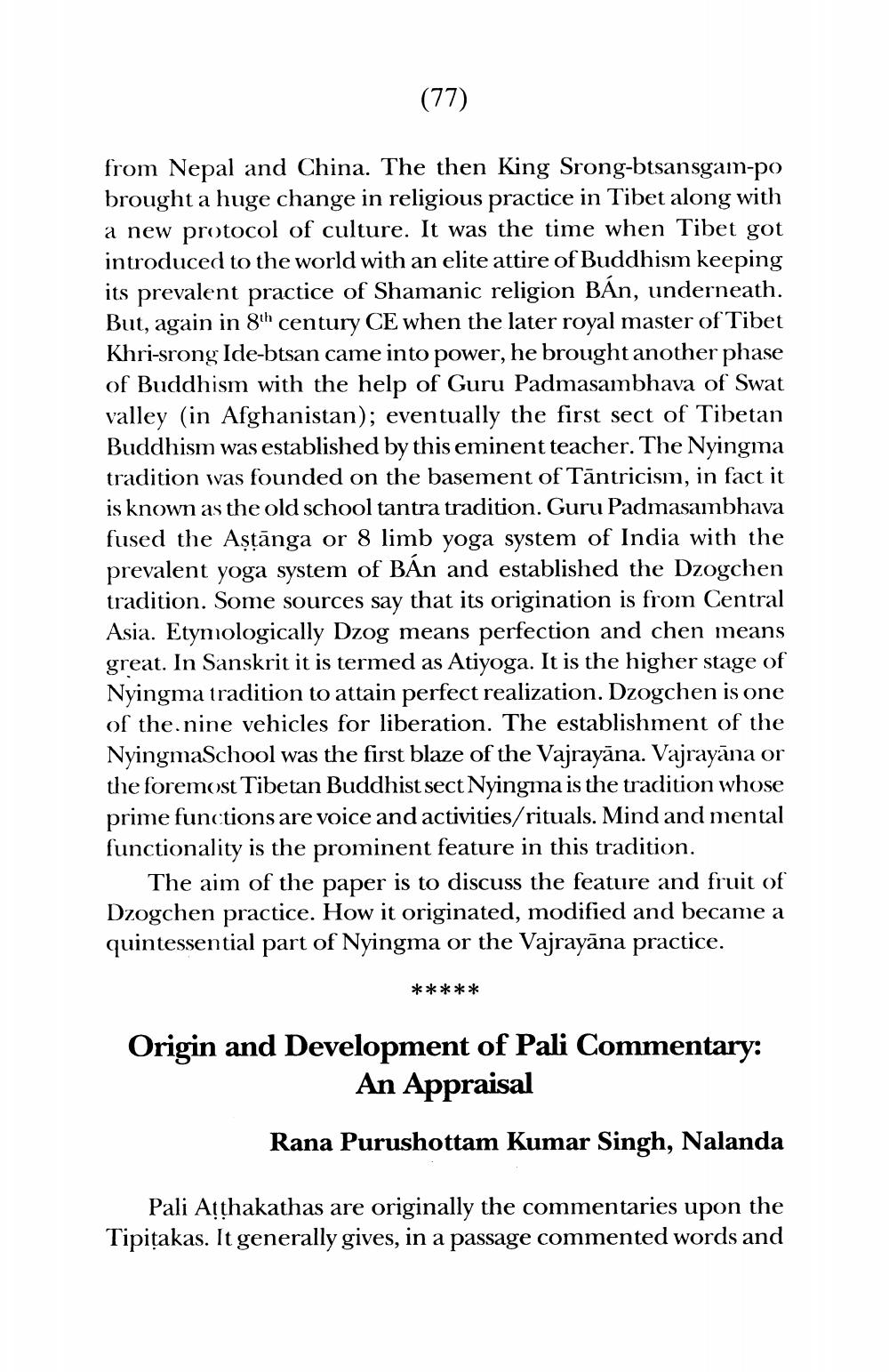________________
(77)
from Nepal and China. The then King Srong-btsansgam-po brought a huge change in religious practice in Tibet along with a new protocol of culture. It was the time when Tibet got introduced to the world with an elite attire of Buddhism keeping its prevalent practice of Shamanic religion BÁn, underneath. But, again in 8th century CE when the later royal master of Tibet Khri-srong Ide-btsan came into power, he brought another phase of Buddhism with the help of Guru Padmasambhava of Swat valley (in Afghanistan); eventually the first sect of Tibetan Buddhism was established by this eminent teacher. The Nyingma tradition was founded on the basement of Tantricism, in fact it is known as the old school tantra tradition. Guru Padmasambhava fused the Aṣṭānga or 8 limb yoga system of India with the prevalent yoga system of BÁn and established the Dzogchen tradition. Some sources say that its origination is from Central Asia. Etymologically Dzog means perfection and chen means great. In Sanskrit it is termed as Atiyoga. It is the higher stage of Nyingma tradition to attain perfect realization. Dzogchen is one of the nine vehicles for liberation. The establishment of the NyingmaSchool was the first blaze of the Vajrayāna. Vajrayāna or the foremost Tibetan Buddhist sect Nyingma is the tradition whose prime functions are voice and activities/rituals. Mind and mental functionality is the prominent feature in this tradition.
The aim of the paper is to discuss the feature and fruit of Dzogchen practice. How it originated, modified and became a quintessential part of Nyingma or the Vajrayāna practice.
*****
Origin and Development of Pali Commentary: An Appraisal
Rana Purushottam Kumar Singh, Nalanda
Pali Atthakathas are originally the commentaries upon the Tipitakas. It generally gives, in a passage commented words and




